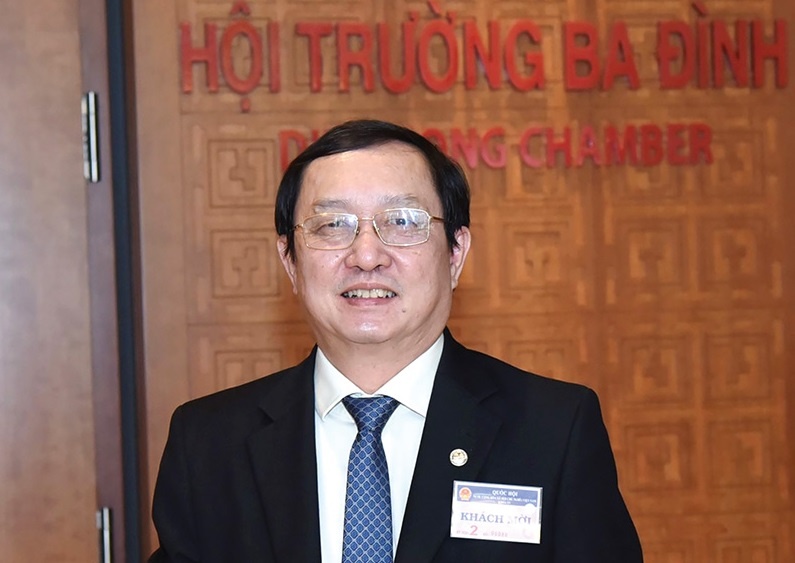INTERNATIONAL INVESTMENT
AND PORTAL
The Law on Intellectual Property was issued in 2005 and has since helped regulate legal relations related to intellectual property (IP). However, a lot has changed since 2005. Vietnam is not purely a user of IP, but has transformed into a nation of creating IP assets to serve a deeper growth model.
 Huynh Thanh Dat-Minister of Science and Technology
Huynh Thanh Dat-Minister of Science and Technology
The amendments to the law made in 2009 and 2019 were mainly to meet the country’s commitments at the World Trade Organization and in the Comprehensive and Progressive Agreement for Trans-Pacific Partnership (CPTPP). Therefore, the law has yet to create a strong driving force for science research and innovations, as well as yet to provide a sufficient and efficient legal framework for protection and exploitation of IP.
In addition, increasingly deep global economic integration with Vietnam’s signing of many international treaties requires significant enhancement in IP protection and enforcement of rights. Typically, in the CPTPP and the EU-Vietnam Free Trade Agreement and others, such international commitments must be legalised via the amendments to the law on IP.
The amendment to the law will be revised towards encouraging innovations, and ensuring stability and consistency, transparency, and feasibility, while increasing efficiency of state management on IP, contributing to boosting the country’s socioeconomic and cultural development.
This amendment will focus on several issues. They include ensuring clear regulations on authors, copyright owners, performers, and owners of rights related to transfer of such rights; encouraging creation, exploitation, and popularisation of inventions, industrial designs, and state-funded layout designs; creating favourable conditions for the process of registration procedures and rights establishment procedures; ensuring an adequate and balanced level of protection; increasing efficiency of supporting activities about IP; improving enforcement efficiency of IP rights; and strictly and fully implementing international commitments within global integration.
Granting the rights to electronic registration and no reimbursement to enable organisations presiding over sci-tech tasks using state funding to become protection title owners for patents, industrial designs and layout designs will create great motivation for organisations to perform rights establishment procedures, as well as carry out protection measures and exploitation of IP. As protection title owners, presiding organisations will have the rights to own and use, allow others to use, or ban use in some instances.
With these rights, presiding organisations are able to take initiatives in exploiting and transferring rights, or cooperating with businesses to commercialise and gain profit and other benefits. On the other hand, when technology transfer, commercialisation of patents, industrial designs, and layout designs are promoted, the state can collect tax from this activity, while fulfilling policy targets such as job creation and social security.
Article 122 and Article 135 of the existing Law on IP ensure the rights of authors of inventions, industrial designs, and layout designs. In particular, the owner shall have the obligation to pay remuneration to the author, except where otherwise agreed by the parties. The minimum rate of remuneration payable by the owner to the author involves 10 per cent of the revenue gained by the owner from the use of the invention or industrial design or layout design; and 15 per cent of the total amount of money received by the owner on each payment upon the granting of a license of the invention or industrial design or layout design.
In regard to digital transformation, in the 2019 amendment, the law on IP has the regulations on online registration of industrial properties in Article 89. Accordingly, the National Office of Intellectual Property (NOIP) has been upgraded and now allows an online registration system for industrial properties at level four, the highest level of online public services.
With the support of the World Intellectual Property Organization, since 2019, NOIP has deployed an online search tool called Wipopublish. Based on search results, individuals and organisations can assess the ability to acquire protection for their trademarks, industrial designs, or inventions they seek to register.
The Ministry of Science and Technology will continue to review and assess so as to propose to the government amend regulations on industrial property data to best facilitate the public’s access to information.
The protection mechanism of IP rights is naturally considered as a tool to encourage and promote creativeness and innovations, as well as prevent unhealthy competition so as to enable innovations and new tech.
In order to meet the IP commitments in new-generation free trade agreements, a favourable climate must be created to attract technology transfer from international organisations so as to improve the quality of homemade products and gradually improve endogenous technological capacity.
This will, in turn, create favourable conditions for Vietnamese businesses to enable them to benefit from their innovations. This must include a larger and easier scope of IP rights protection and more transparency.
Effectively enforcing the beneficial commitments also means strict punishments for violations, thus creating confidence in a healthier business environment. Together with the benefits, there are barriers ahead – especially in the global integration process – that will require close coordination from the government, businesses, and organisations. Only then can Vietnam really benefit from its global integration efforts.








